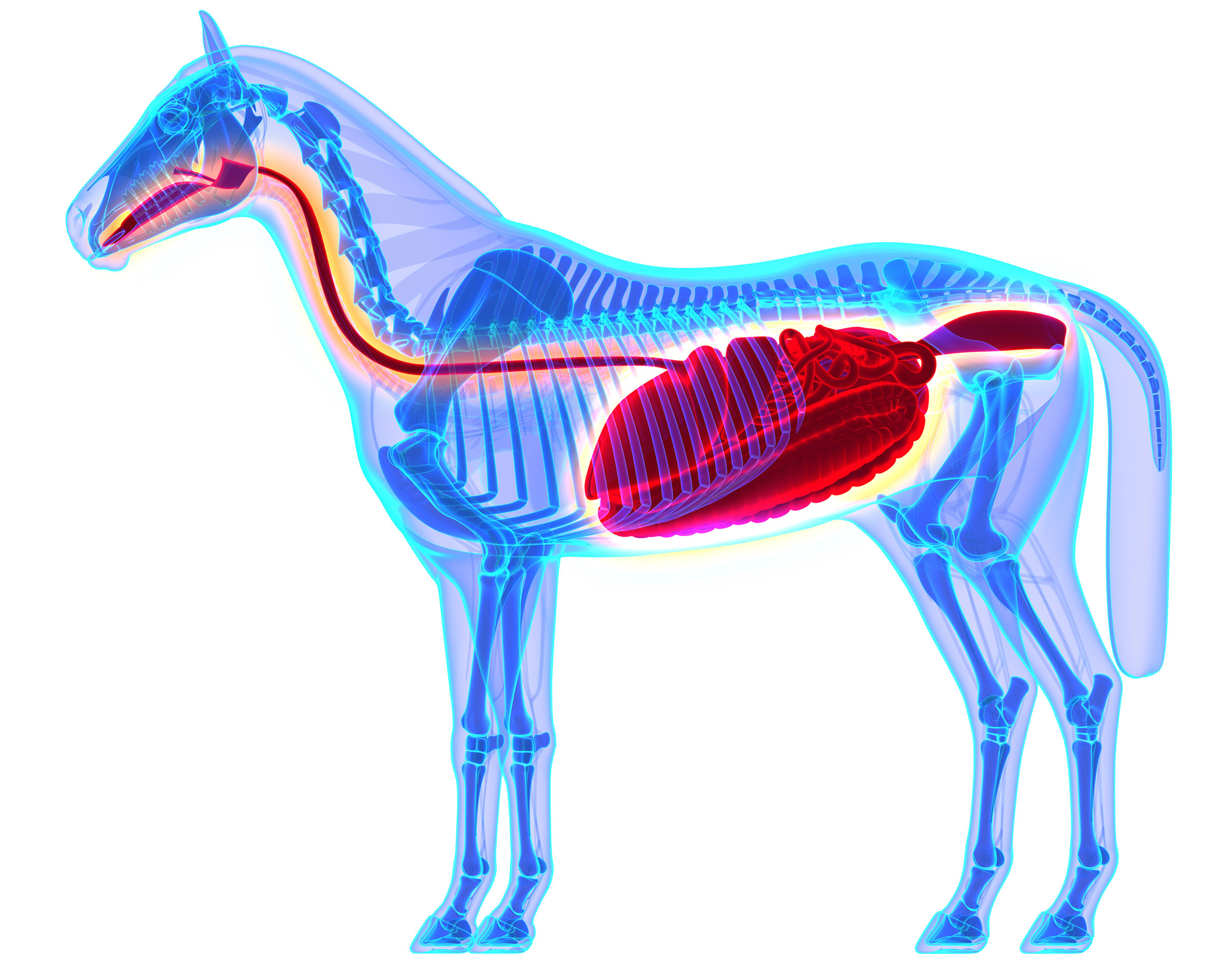
Horses are non-ruminant herbivores also known as a “hindgut fermenters.” Their digestive tract is made up of a simple stomach, small intestine and large intestine. The natural feeding habit of the horse is to eat small amounts of roughages often. Domestication has brought a change to this. Modern management practices of horses incorporate stabling, increased grain based concentrate consumption, meal feeding and limited access to pasture. This has led to a myriad of problems by undermining the horses’ digestive capabilities. By understanding the basics of their digestive tract we are better able to make more appropriate feeding and management choices.
Stomach
The stomach is small in relation to the rest of the digestive tract and limits the amount of feed that can be consumed at one time. Another limitation to the stomach other species the horse cannot regurgitate food if they overeat or consume something poisonous. The average sized horse (1,100 pounds) has a stomach capacity of approximately 4 gallons.
Once the stomach becomes two-thirds full it begins to empty whether the food has been sufficiently broken down or not. In the stomach, food is mixed with pepsin (an enzyme to digest proteins) and hydrochloric acid to help break down solid particles. The rate of passage of food through the stomach is highly variable, depending on how the horse is fed. Passage time can be as short as 15 minutes when the horse is consuming a large meal.
Small Intestine
The small intestine is made up of the duodenum, jejunum and ileum. It is approximately 70 feet in length and holds up to 11 gallons. Bile from the liver acts here, combined with enzymes from the pancreas and small intestine itself. Horses do not have a gall bladder, so bile flows constantly an adaptation to a slow but steady supply of food.
After the food has been digested, it is absorbed through the walls of the small intestine and carried off by the blood stream to whatever cells need the nutrients. Nearly 50—70% of carbohydrate digestion and absorption and almost all amino acid absorption occur in the small intestine. It can take as little as 30 to 60 minutes for food to pass through the small intestine.
Horses are very susceptible to colic or death from toxic materials in the feed. Unlike the cow that has bacteria in the rumen that can detoxify materials before they reach the small intestine, toxic material a horse might consume enters the intestine and is absorbed into the blood stream before it can be detoxified. Therefore, it is very important not to feed horses moldy or spoiled feeds.
Large Intestine
The large intestine is made up of the cecum, large colon, small colon and rectum. The cecum is a blind sack approximately 4 feet long the holds up to 8 gallons. The cecum is a microbial fermentation vat similar to the rumen in the cow. The microbes break down feed that was not digested in the small intestine, particularly fibrous feeds like hay and pasture. This process can take around 7 hours to complete.
The microbes in the cecum produce vitamin K, B-complex vitamins, proteins, and fatty acids. The reason horses must have their diets changed slowly is so the microbes in the cecum are able to modify and adapt to the different chemical structure of new feedstuffs. Too abrupt a change in diet can cause colic, because new materials are not properly digested.
The large colon, small colon, and rectum make up the remainder of the large intestine. The large colon is about 11 feet long and holds up to 20 gallons of semi-liquid matter. Microbial digestion continues and most of the nutrients made through microbial digestion are absorbed here. Due to its many twists and turns, it is a common place for a type of horse colic called an impaction.
The small colon is also approx. 11 feet long, holds about 5 gallons, is the area where the majority of water is absorbed, and where fecal balls are formed. Food will stay in the large intestine for 35 to 65 hours.
This article was written by Dr. Tania Cubitt of Performance Horse Nutrition.



